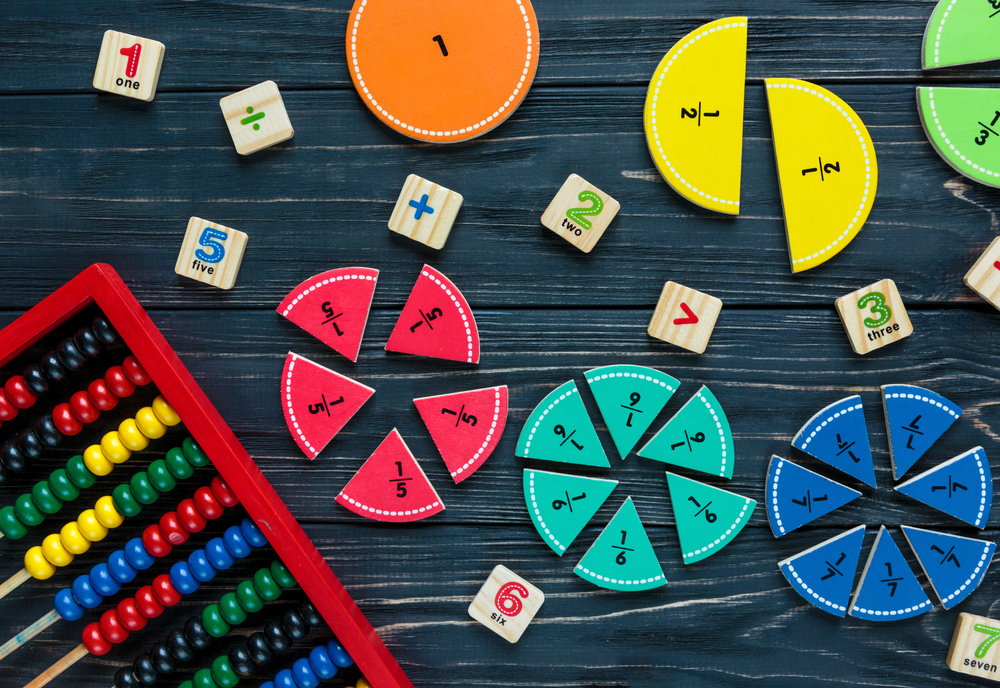Basic measurement concepts Worksheets for Ages 5-8
8 filtered results
-
From - To
Introducing our "Basic Measurement Concepts Worksheets for Ages 5-8," designed to inspire young learners as they explore essential measurement skills! Tailored for early grade students, these engaging worksheets cover various foundational concepts such as length, weight, and volume using colorful visuals and fun activities. Kids will enjoy hands-on learning that fosters critical thinking and problem-solving abilities while building their understanding of measurements in real-life contexts. Perfect for home or classroom use, our worksheets not only support mathematical learning but also encourage creative thinking. Discover a world of measurement fun and help your child develop confidence in their math skills today!


Tall or Short and Long or Short? Worksheet
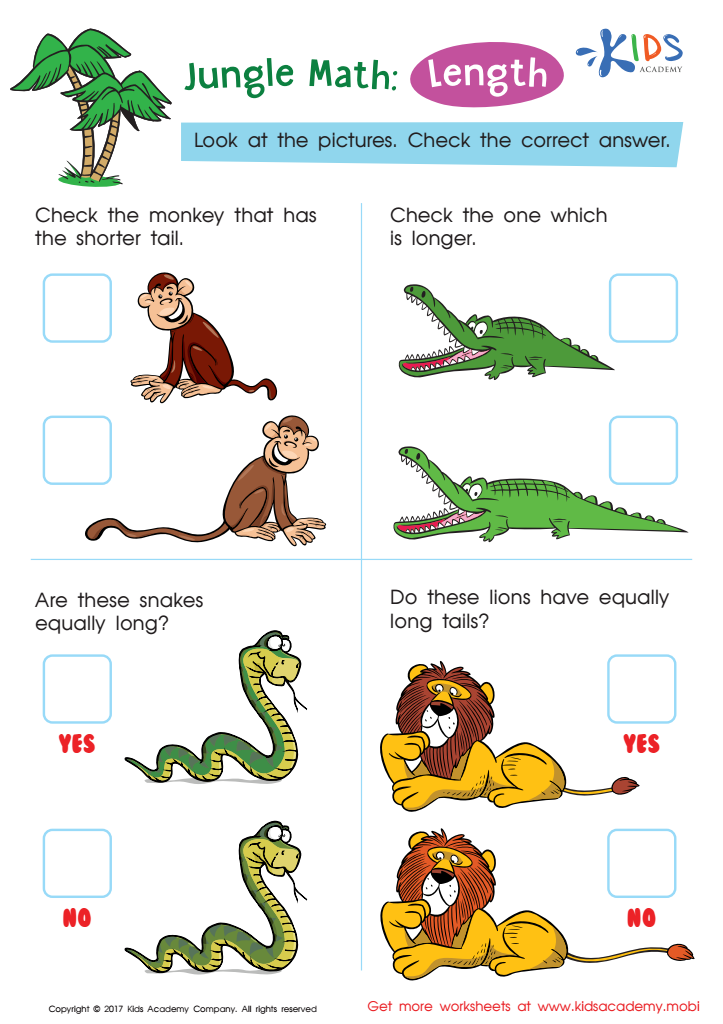

Which One Is Longer - Length Worksheet


Which Is Taller Worksheet


Shapes of All Sizes Worksheet
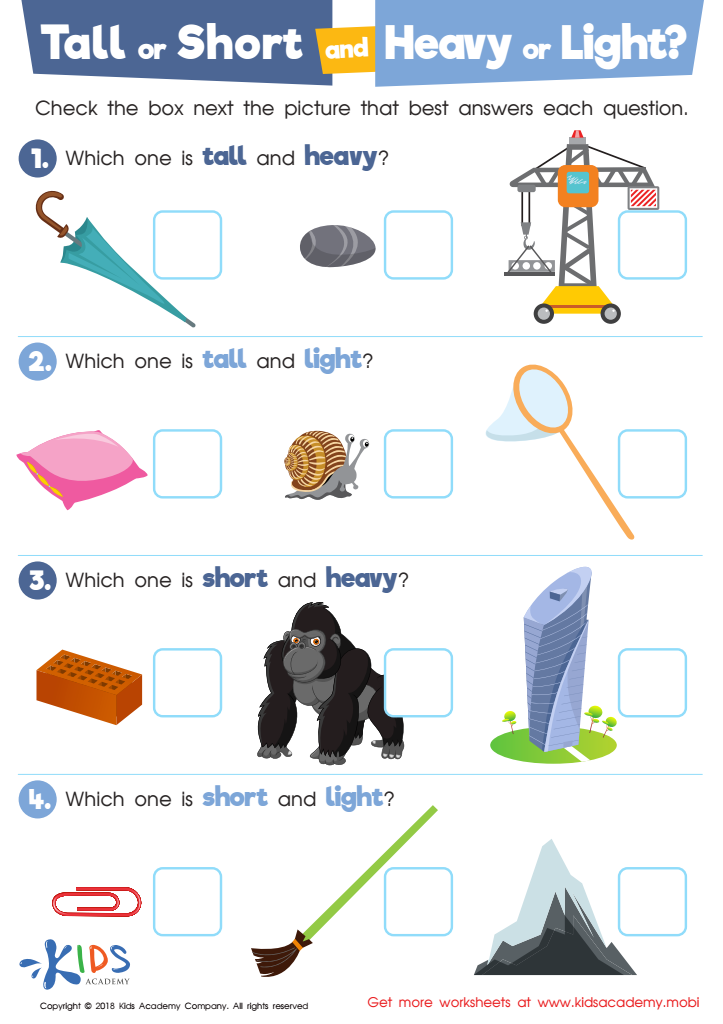

Tall or Short and Heavy or Light? Worksheet
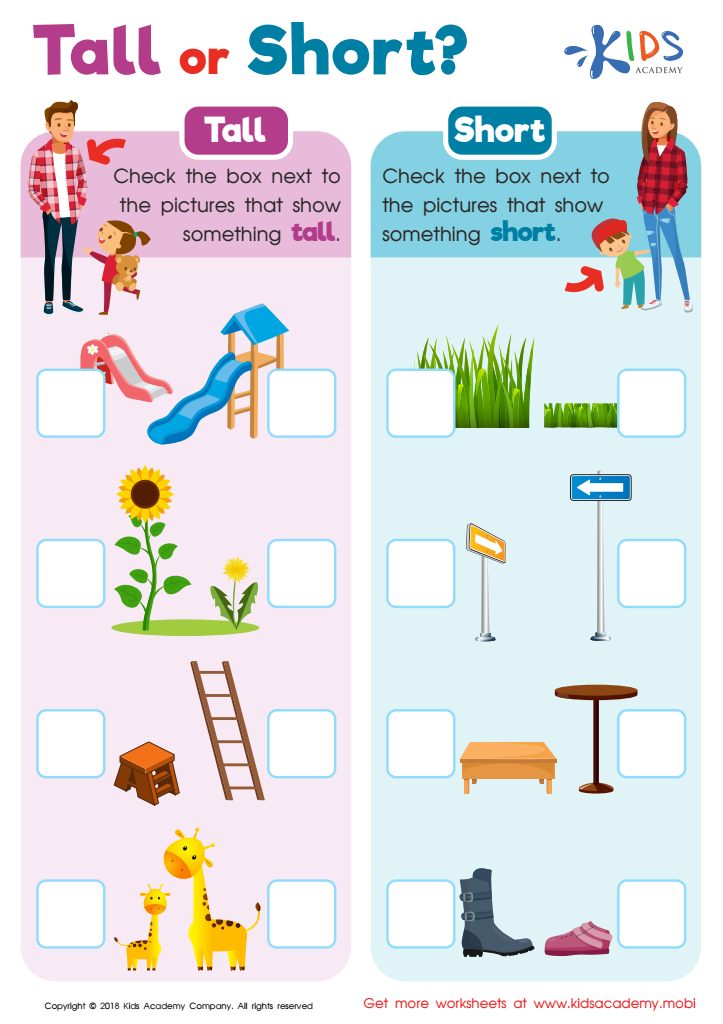

Tall or Short? Worksheet


Heavier or Lighter? Worksheet
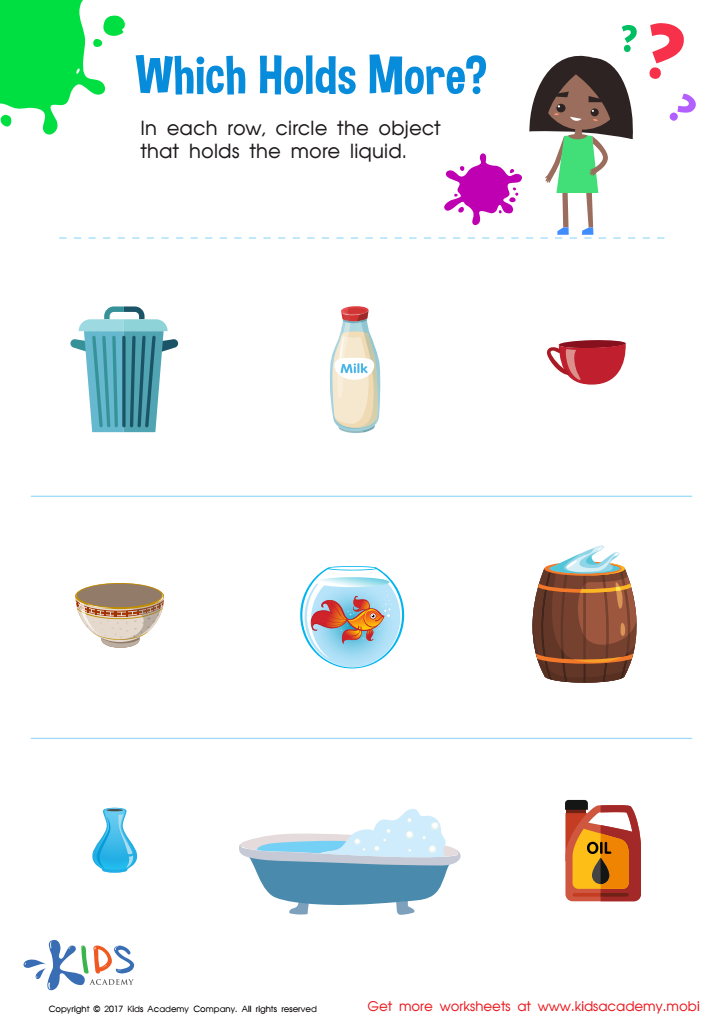

Which Holds More: Capacity Worksheet
Understanding basic measurement concepts is crucial for children ages 5-8, as it lays the foundation for their mathematical development and everyday life skills. At this age, children are naturally curious about sizes, lengths, and quantities, thus teaching them measurement concepts helps harness this curiosity.
Learning how to measure—whether it’s determining the height of a child, the length of a pencil, or the amount of ingredients in a recipe—encourages critical thinking and problem-solving skills. These fundamental concepts support children's understanding of comparison, estimation, and scales, essential skills needed in mathematics and beyond.
Moreover, measurement connects classroom learning to real-world experiences, making learning more engaging. Teachers and parents can incorporate playful activities, such as cooking or gardening, to transform abstract concepts into tangible experiences. By discussing terms like "longer," "shorter," "heavier," and "lighter," educators and caregivers can develop children's vocabulary and foster communication skills.
In short, prioritizing basic measurement concepts equips children not only with essential mathematical skills but also enriches their cognitive development, practical life skills, and enhances their ability to interrelate and engage with the world around them. Therefore, it is imperative that parents and teachers focus on these vital learning areas.
 Assign to My Students
Assign to My Students




